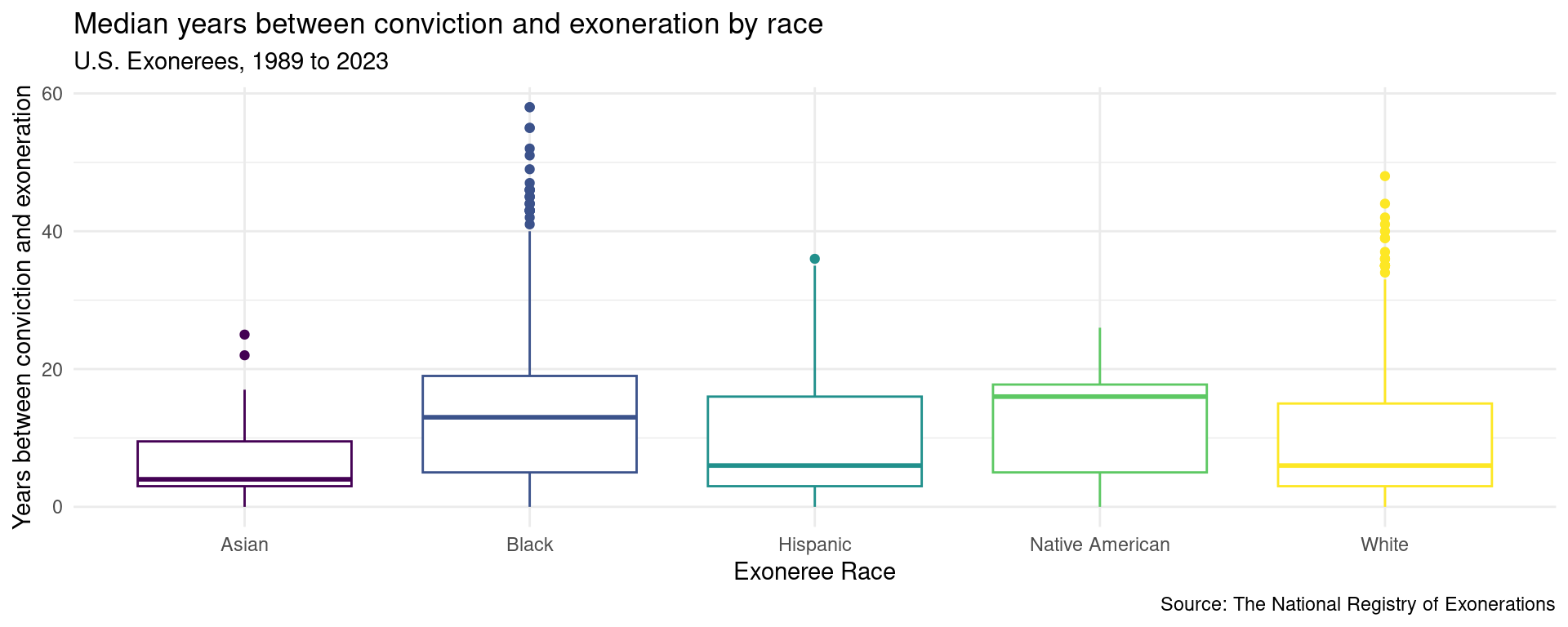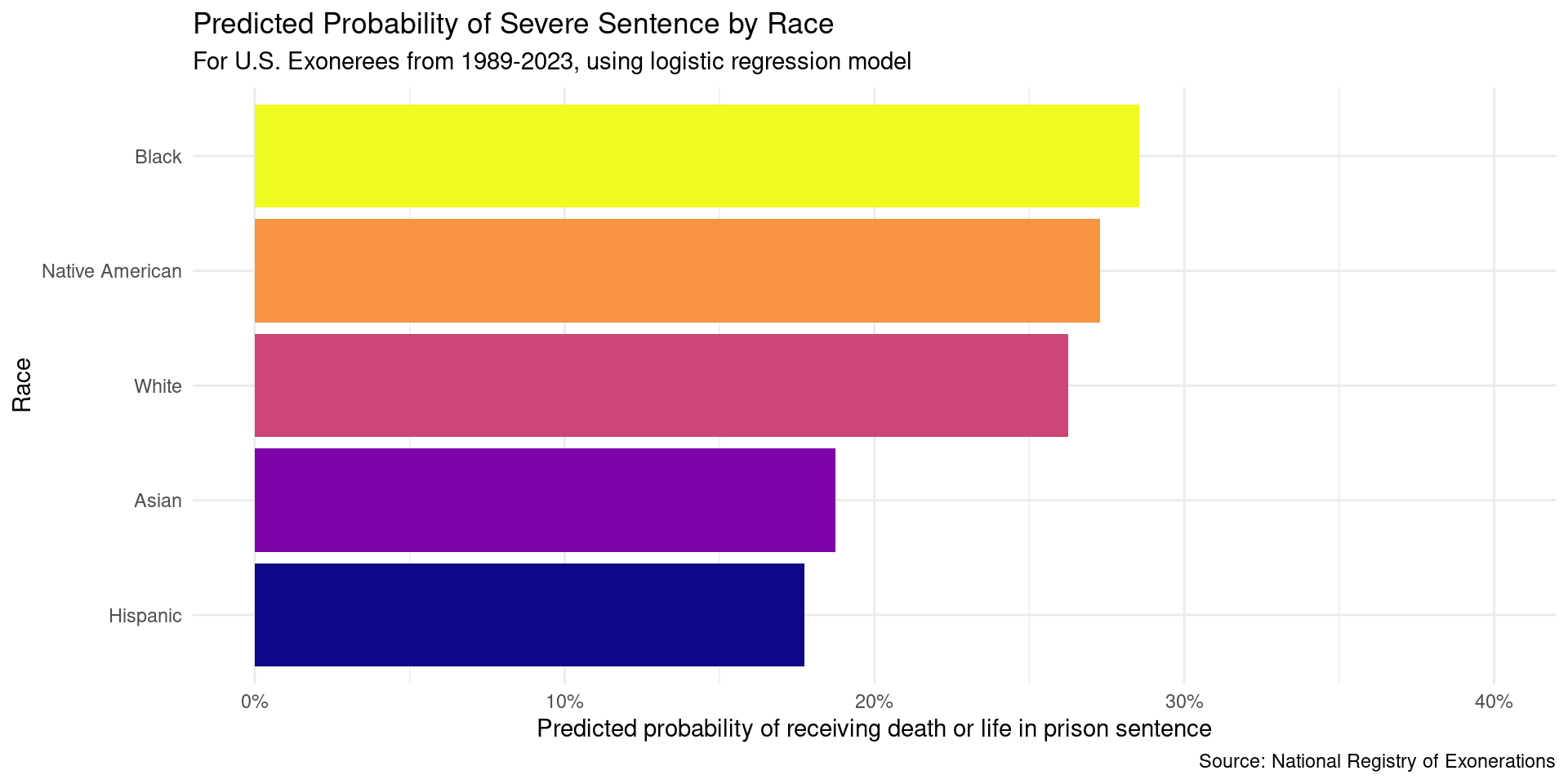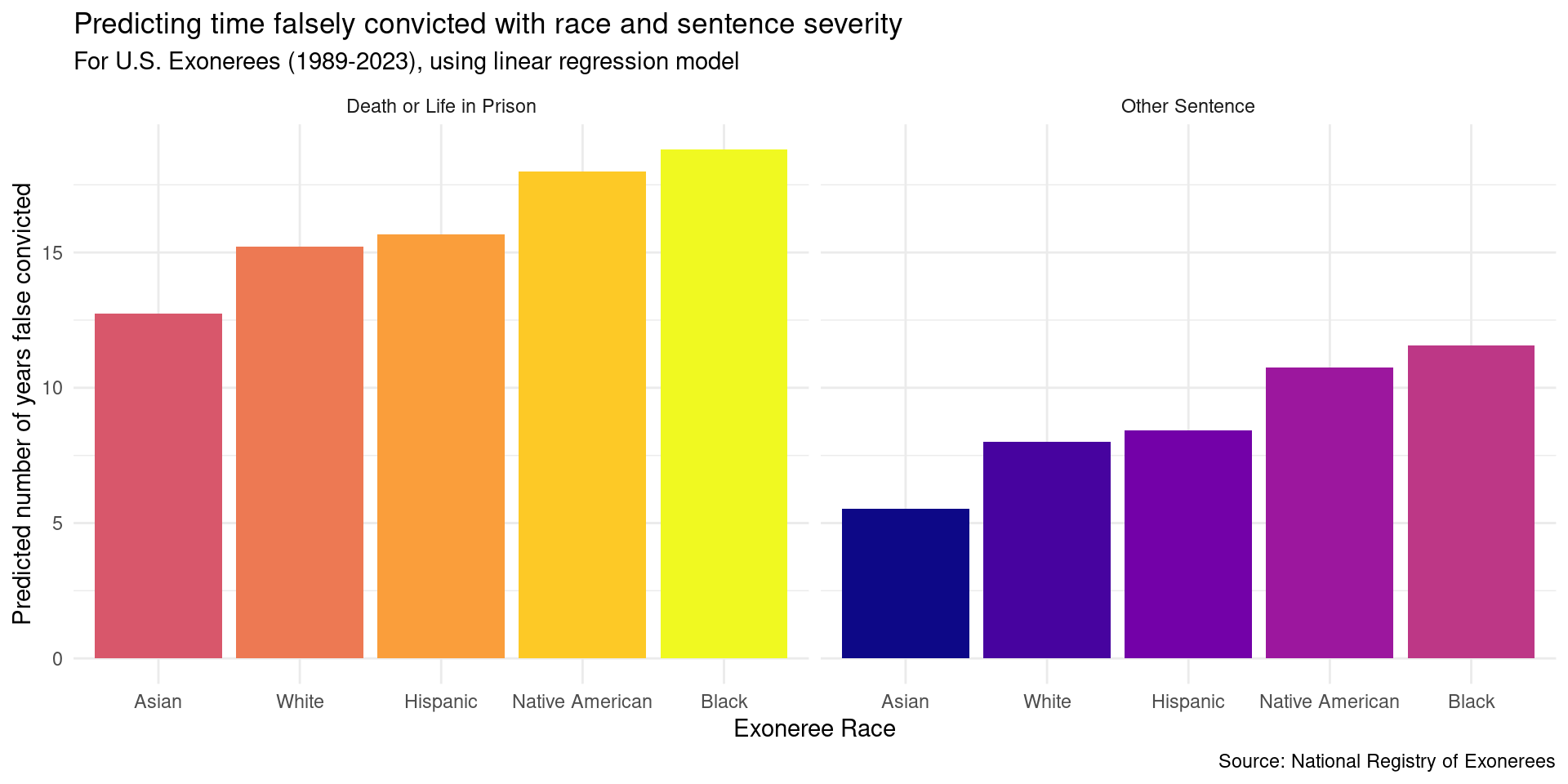Exonerations in the U.S.
Analyzing race, sentence severity, and time between conviction and exoneration
Caleb Chin, Khushi Patel, Alexa Prague, Derrick Chia, Cynthia Lei
5/5/23
Topic and motivation
The criminal justice system in the United States has been under scrutiny for its disproportionate impact on minority communities.
We want to investigate:
how race affects the severity of the sentences exonerees receive
how length of time between conviction and exoneration, severity of crime, and sentence are related
Data introduction
- Observations represent all known U.S. exonerees between 1989 and 2023.
- Data was collected by The National Registry of Exonerations
- The data fields consist of exoneree information such as name, race, and sex as well as information about their exoneration.
- Data has several subpopulations
Highlights from EDA
| race | num | prop |
|---|---|---|
| Asian | 32 | 0.0097442144 |
| Black | 1724 | 0.5249695493 |
| Black;#White | 1 | 0.0003045067 |
| Don't Know | 7 | 0.0021315469 |
| Hispanic | 400 | 0.1218026797 |
| Native American | 22 | 0.0066991474 |
| Native American;#White | 1 | 0.0003045067 |
| Other | 19 | 0.0057856273 |
| White | 1078 | 0.3282582217 |

Asian, Black, White, Hispanic, and Native American exonerees appear the most in the data set
Native American and Black exonerees often spend longer between conviction and exoneration than exonerees of other races.
Predicting sentence severity with race

Significance of results at 5% significance level: Hispanic Exonerees vs White Exonerees
Time falsely convicted, race, and sentence severity

Significance of results at 5% significance level: Black Exonerees vs White Exonerees, Sentence Severity
Conclusions + future work
- Hispanic exonerees have a stat. significant difference in predicted probabiliy of getting severe sentence than White exonerees
- How about the rest of the exonerees?
- Black exonerees have stat. significant difference compared to White exonerees in expected years between conviction and exoneration, holding sentence severity constant.
- What does this imply?
- Key Limitation: data only represents those who have already been found innocent, we cannot extrapolate to all falsely convicted people.
- Future work:
- Transforming sentence into numeric field to examine how sentence length (in years) is associated with race and/or other factors